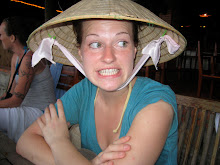“The good photograph is not the object, the consequences of the photograph are the objects. So that no one would say, ’how did you do it, where did you find it, ‘ but they would say that such things could be.”
For this assignment I chose to write about Dorothea Lange. Lange was a photographic journalist during The Great Depression in the 1930s. I primarily chose her for her type of work but after researching her I grew to love her style of photography as well. Her work is more than photography to me. Each image speaks volumes of the economically devastating times many people faced throughout this period.
Her subject is primarily people. Focusing on the labour strikes, breadlines, and the migrant and destitute families. Her genre wasn't just photojournalism but documentary photography. Providing images free to newspapers she was able to share with the nation the emotional and physical toll the Depression took on the country and ultimately led to her employment with the Resettlement Administration from 1935 to 1939.

Lange wasn't always doing photojournalism. She was schooled at Columbia University and worked in a New York Portrait studio until 1918. Throughout the 1920s she continued studio work in San Fransisco. It wasn't until the Depression set on in 1930s that she started to take her camera to the streets to capture the social upheaval.
In looking at several of her photos and comparing them I've been able to learn more about her style of photography. Lange's photographs are usually presented as individuals images rather than in sequenced stories. In many of the examples I came across I noticed an excellent use of light to create a mood or feeling not necessarily that of which you'd think would be implied in the photo. Many if not all of her photos have a sense of despair or loss but often adding touches of light gives the photos hope.
For example the photo on the right, titled "Resettled farm child, New Mexico" is clearly a photo depicting a hard time in this child's life, but the way she chose to place the child in the center of the light gives the sense of a new begining for this child.
Another photo example below (titled children of oklahoma drought refugee in migratory camp) shows two children looking sad and forlorn. However the light in image adds another layer to the mood the children faces imply. Working with such serious matter, Lange does a good job to add a sense of optimism despite the current situation.

Even with the First image, "Migrant Mother" the way the mother is holding the two children, supporting and caring for them gives a great sense of family, love and again hope.
Besides her use of light she also applies several important composition elements in many of her photos. A common one is filling the frame as you can see in her most famous image, "Migrant Mother" and many others. Each image is carefully created and composed to present her message.
Although a common theme in her work would be the tragedy which is the Great Depression, Lange's images became icons of the era and were used to inspire. Her images were art, but they were also documentary. Ultimately her photography was her passion. She is quoted saying "To live a visual life is an enormous undertaking, practically unattainable... but I have only touched it, just touched it." Lange took in what was around her, whatever it was, and turned her emotions into her images. I want to be that kind of photographer someday that can present so clearly a heartfelt emotion. Inspiring viewers and stirring up passion.




